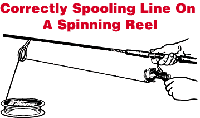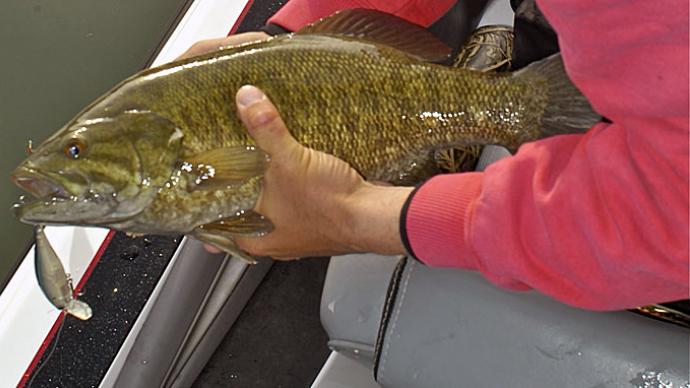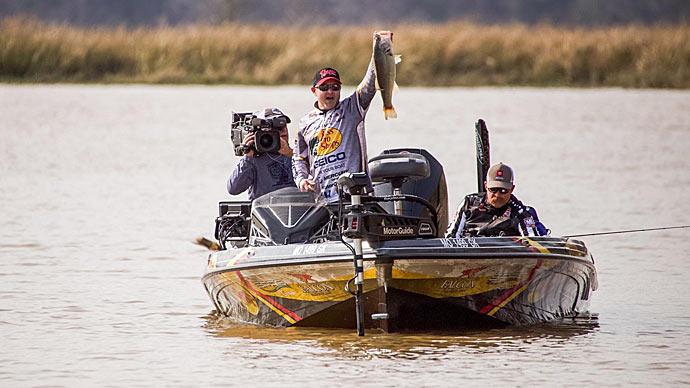| "To be honest with you, the lightest line that I let Chris use to sew buttons on my shirt is 14lb test." |
| --Jimmy Houston |
Image

Most lines used in bass fishing are nylon monofilaments, although co-filament, braided, and "fused" lines such as "Fireline" are becoming more popular. Buy only "premium" fishing line, which is more uniform and durable. Fishing line can be matched to conditions according to the following criteria:
| Strength | This is measured in pounds of force required to break the line. Most lines break at a much higher "pound test" than their labels state. "World-record" lines are designed to break at or just below the labeled pound test. |
| Abrasion Resistance | For fishing around cover such as rocks or brush, use a line that will not break easily when rubbed against the cover. |
| Diameter | Line diameter affects castability, running depths of your lures, stretch, and visibility. Thinner lines are harder for fish to see, and they impart a more lifelike action to specific lures such as crankbaits and grubs. Thicker lines are more resistant to abrasion. |
| Stretch | Lines that stretch somewhat are more "forgiving" and do not break as easily when a fish pulls against them. Low-stretch lines aid in detecting strikes and setting hooks. |
| Stiffness | This quality is closely related to line stretch. A stiff line generally is harder to cast than a flexible line, but it often is more sensitive and abrasion resistant. |
| Visibility | In clear water, it is essential to have line that is not very visible to fish. But when fishing lures on which strikes are likely to be subtle--such as jigs, worms, and grubs--a fluorescent, highly visible line makes it easier to detect line movement that may indicate a strike. |
Tips on Lines
- Store the line in a dark place under moderate temperatures.
- Do not expose the line to chemicals such as gasoline, which may cause it to deteriorate.
- While fishing, frequently check for nicks and abrasion by running the last several feet of line between your thumb and fingers.
- Clip off several inches of line and retie to the lure frequently, especially when fishing heavy cover or catching fish.
- If a knot forms in the line, clip off the line above the knot and discard the line.
- Replace the line on each reel when it shows signs of wear. (Buying lines in bulk spools will avoid waste of excess line left on "filler" spools.)
How to Spool Line Onto Reels
Image

| Baitcasting: | Run the line through the rod guides and the level-wind device on the reel, then attach it to the spool with an arbor knot. The line spool should turn as the line is fed onto the reel. Hang the line spool vertically on a nail or insert a pencil through the hole in the center of the spool and have someone hold the pencil as the line is wound off the spool and onto the reel. Or drop the line spool into water. It will float and the spool will turn as line is wound onto the reel. Add tension to the line by squeezing it between the thumb and a finger as you wind it onto the reel. Fill the reel to within 1/8 inch of the lip of the spool. |
Image

| Spinning & Spincast: | The line spool should not rotate since the reel spool does not rotate. Lay the line spool flat on the floor with the label side pointing up. Uncoil the line from the line spool, run it through the rod guides, and tie it to the reel spool with an arbor knot. Add tension to the line with the thumb and a finger as you wind it onto the reel. After 10 or 15 turns of the reel handle, lower the tip to give slack to the line. If the line lays in relatively neat coils, continue filling the reel. If it twists or kinks, turn the line spool over and wind on line. Fill the reel to within 1/8 inch of the lip of the spool. |




